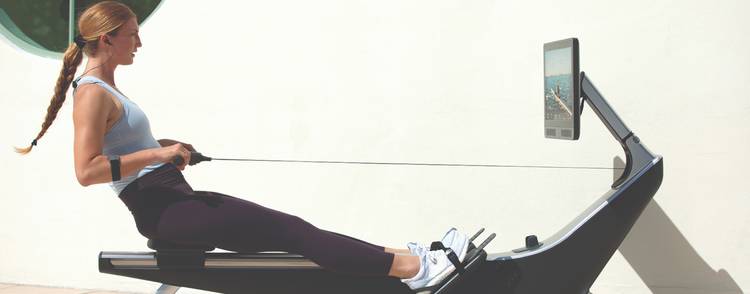
Training for Fall Races: Running and Beyond – A Comprehensive Guide for Vancouver Marathoners
Vancouver hosts some of the best marathons in the world year-round. With routes including scenic views of beaches, parks, and the iconic seawall, it’s no wonder why it’s such a coveted location for runners.
And in the fall, those routes get even more beautiful. Running in crisp air past golden leaves, it’s hard to imagine a more beautiful backdrop for a race.
But preparing for a fall marathon requires more than just logging miles. It requires a comprehensive training approach to ensure race day success. In this guide, we’ll dive deep into training techniques from cross-training to nutrition planning, all the way up to race day tips.
Crafting a Multi-faceted Approach to Marathon Training
You might think the only thing you need to do to prepare for race day is to run, run, and run some more. And while you’re not wrong, a diversified training regime is a better approach. A well-rounded marathon training plan that includes strength training, flexibility work, and alternative forms of cardio will enhance your performance and help reduce your risk of injury.
Strength Training During Marathon Prep
Full-body strength training is an important part of marathon prep. Strengthening your lower body will help you build the power needed to push off the ground on every stride. It will also make the tissues surrounding your joints stronger which can help you run more efficiently and reduce the risk of injury. Strengthening your upper body will help you avoid muscular imbalances and develop a better arm drive – which is an essential part of a strong stride.
Some of our favourite strength training tools are
- The classic dumbbell
- Resistance bands
- Kettlebells (which allow you to train dynamically and build explosive power)
Alternative Cardio During Training
Running is a high-impact activity. And too much running can have negative impacts on your joints and tissues, and lead to injuries like shin splits. Integrating alternative types of low-impact cardio–like cycling, swimming, or rowing–can help you build your cardiovascular endurance while giving you a break from the strain of running.
Consider adding some alternative cardio pieces to your home gym, like the Keiser M3i Indoor Cycle Bike or a WaterRower. These low-impact cardio tools will work your legs, your lungs, and your heart without any excess strain on your joints. Plus, you won’t have to worry about skipping your training to avoid Vancouver’s rainy fall weather.
Flexibility and Balance Work
The theme during marathon prep? Longevity. Avoiding injuries and staying healthy should be your #1 marathon training goal. Incorporating yoga and Pilates poses into your training schedule can help improve your flexibility and balance, release tight spots, and help make you a less injury-prone athlete.
For your yoga sessions, secure a soft and grippy yoga mat that will help cushion your joints and reduce any slipping during poses. This Fitness Town Yoga mat checks all the boxes.
Pace, Endurance, and Vancouver’s Diverse Landscapes
Your marathon pace is considered how much time you need to run 1 km or 1 mile. And it should be consistent over the entire race, if not faster in the last few miles. For example, if you want to complete your marathon in 4 hours flat, you need to run 1 km in about 5 minutes and 40 seconds, or 1 mile in 9 minutes. Check out this helpful marathon pace chart to figure out how fast you need to run each mile to achieve your desired finish time.
Once you decide on your finishing time, it’s all about building the endurance you need to cross the finish line. The first step to increasing your aerobic capacity is building your base mileage. If you’re new to marathon running, you should start with about 20 miles a week before you attempt 20+ miles in a day. Here’s a sample training plan:
Monday 2 Km
Tuesday 5 Km
Wednesday Rest
Thursday 4 Km
Friday 3 Km
Saturday 8 Km
Sunday 1 Km (Recovery Run)
Training on Vancouver Terrains
From urban roads to unpaved trails to the scenic seaside, Vancouver offers a handful of different terrains for its races. Once you decide which one you’re running, research the terrain so you can practice. For example, if you choose the Hallow’s Eve Race on the North Shore Trails, you’re going to want to practice running some hills. But if you choose the Boundary Bay Marathon, your flat-road running will be just fine. Check out this list of Vancouver races for the rest of the year.
To cover all your bases, consider investing in a treadmill so you can continue your training indoors. Vancouver has been appropriately nicknamed “The Wet Coast” due to the amount of rain it gets during the fall. Having a treadmill on hand, like the LifeSpan TR5500iM, not only means you can get some miles in during showers, but you can practice running at different elevations with the push of a button.
Fueling and Hydration: Nutrition for the Marathoner’s Body
When it comes to marathon prep, food is fuel. And understanding your macronutrients will help you fuel your body efficiently. Using a macro calculator will help you determine the perfect protein/fat/carbohydrate ratio for your training needs. A good rule of thumb for beginners is to get 40-60% of your calories from carbs, 20-25% from fats, and 20-20% from protein. Keep in mind that you might be consuming more food than you’re used to. But running 20 miles a week will also burn more calories than you’re used to!
Staying Hydrated During Fall Races
When you run in fall races, it’s easy to get dehydrated. Your cue to drink during summer runs is the buckets of sweat you’re losing. But during the fall, the air is cooler, and you don’t sweat as much, which can leave you wondering how much water to drink during runs. A good baseline is to drink 5-12 oz of fluids every 15-20 minutes.
Race Day Nutrition:
Have you ever heard of “carb loading”? Your body converts carbs to glycogen, which gets stored in your muscles for fuel. So, carb loading is a common strategy used by endurance athletes to increase those stores before a big event, like a 42 km run. Be sure to eat plenty of complex carbs, like oatmeal and sweet potatoes, leading up to the race, and have quick digesting carbs like rice cakes and bananas on hand for immediate energy.
Pro tip: Keep energy chews in your belt bag or pocket during the race. These will give you a quick carb hit when you start to lose steam.
Dress Rehearsals: Simulating the Race Experience
Practice makes perfect, and a practice run of your race ensures you leave no stone unturned when it comes to your marathon preparation. Around 3-4 weeks out from the race, your endurance should be ready to handle a 42 km practice run. And experts recommend conducting at least one before race day.
Getting in full gear—including your go-to running shoes, moisture-wicking clothes, belt bag, sunglasses, and headphones blasting your marathon playlist—will help you get in the zone and work out any kinks before the big day.
Practical Steps
You’re only going to do a dress rehearsal once, so make sure you go all out.
If your race starts at 7 a.m., practice waking up early enough to fuel up, stretch out, and warm up before getting to the finish line. (Yes, that might mean getting up before the sun does.) Marathon races usually have refuelling stations with water bottles and energy chews every 5k on a course. So try to find someone willing to drive to designated checkpoints to offer you these refreshments to help you nail down when it’s time to replenish the reserves.
Race Day Strategies: From First Light to Finish Line
If you’ve put in the work to prepare for your marathon, race day is the time to reap the reward.
Mental Tactics
Marathon running is as much a mental challenge as a physical one. And more often than not, your mind will try to quit and tell you it’s too hard before your body is ready to give up. Keep visualizing the finish line, speaking positive affirmations over yourself (even if it’s Thomas the Train’s “I think I can”), and stay grounded when the going gets tough. You trained for this, and it’s your time to shine.
Post-race Recovery
And when you do finally cross that finish line, your recovery becomes just as important as all the training leading up to the big day. After running 42 km, it can be tempting to sit down (and never get back up). But it’s important to keep moving and perform dynamic stretches for 10-15 minutes after your run to avoid fluid and acid build-up. After stretching, make sure you eat a carb-heavy snack within an hour after finishing the race. And don’t forget that Fitness Town offers tools that can aid your recovery.
- The TriggerPoint Grid Foam Roller can help release knots and target tension.
- The TriggerPoint NANO Foot Roller can help massage the arches of your feet
- The Hyperice Massage Gun helps alleviate soreness by flushing the lactic acid from your muscles
Concluding Thoughts: A Holistic Training Approach Results in Running a Successful Race
The road to 42 km isn’t always easy. And it requires more than being a good runner. A successful marathoner knows that a holistic approach that includes a diligent training program and mental preparation will lead to race day success.
If you’re not ready for a full 42 km marathon, check out the Granville Turkey Trot 10K. It’s held on Thanksgiving Monday and is the perfect opportunity to celebrate the holiday and have some fun with the Vancouver running community. If you need more help getting race-day-ready, stop by a Fitness Town store or call us at 1-855-417-111 to talk to an expert who can recommend equipment to take your training to the next level.

